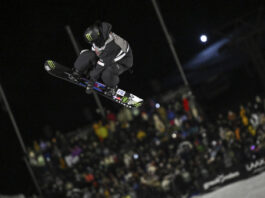PORT-AU-PRINCE, Haiti (AP) — Haiti is once again facing a wave of chaos fueled by ongoing gang wars, which have spiraled since the 2021 assassination of the country’s president. Gang leaders have grown increasingly violent and empowered, taking advantage of power vacuums in the Caribbean nation to grow in strength. As gangs continue to rampage across Haiti, the country’s embattled Prime Minister Ariel Henry remains blocked out of the country due to the closing of the airport.
Here’s a look at how Haiti got to this point:
January 2010 — Haiti is rocked by a magnitude 7.0 earthquake, killing about 220,000 people and thrusting Haiti into a humanitarian crisis.
July 2021 — Haitian President Jovenel Moïse is assassinated in his home by a group of foreign mercenaries in a plot that authorities say involved elite Haitian police officers. The slaying captures the world’s attention and triggers the spiral of gang violence that has deepened month by month.
January 2023 — After Haiti’s government fails to hold elections, citing unprecedented levels of gang violence, Haiti is stripped of its last democratically elected officials. Critics say it exacerbated democratic decay and turned the country into a de-facto “dictatorship.”
Feb. 29, 2024 — Haitian gangs carry out a series of coordinated attacks across Haiti’s capital, Port-au-Prince, killing at least four police officers. Powerful gang leader Jimmy Chérizier, better known as Barbecue, claims responsibility for the attacks. Chérizier says he aimed to capture police and government officials and block the return of Prime Minister Ariel Henry, who was in Kenya to push for the United Nations-backed international police force to fight gangs in Haiti.
March 1 — Henry signs an agreement with Kenya to deploy 1,000 police officers to the Caribbean nation to combat gang violence, a painstaking process delayed by a court that ruled the deployment is unconstitutional.
March 2 — Gangs in Haiti continue to carry out attacks, this time storming two of the country’s biggest prisons and freeing more than 4,000 inmates. It prompts police to urgently appeal for help as they say security forces are overwhelmed.
March 3 — Haiti’s government declares a state of emergency and a nighttime curfew, hoping to control the explosion of violence.
March 4 — Heavily armed gangs try to seize control of Haiti’s main international airport, shutting down flights and fueling chaos as Prime Minister Ariel Henry remains out of the country following a trip to Kenya. It prompts many in Haiti to wonder where their leader is.
March 5 — Henry lands in Puerto Rico after gang leader Chérizier effectively declares war on him. The prime minister was on a charter flight destined for the Dominican Republic, which shares the island of Hispaniola with Haiti, but the flight was diverted after the country announced it was suspending air traffic with Haiti.
March 6 — With embattled Henry still locked out of his country, Haitian politicians begin to form alliances and vie for power. Henry faces increasing pressures to resign from both within Haiti and internationally.
March 7 — Haiti remains paralyzed as gangs have continued their rampage. The country extends its nighttime curfew and state of emergency measures. Meanwhile, the country’s leader Henry stays silent while he travels the world and attempts to negotiate a way back into his country, something that appears increasingly unlikely.
This website uses cookies so that we can provide you with the best user experience possible. Cookie information is stored in your browser and performs functions such as recognising you when you return to our website and helping our team to understand which sections of the website you find most interesting and useful.
